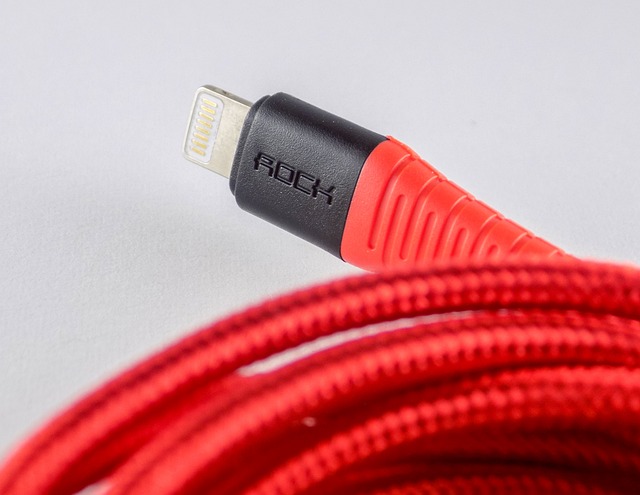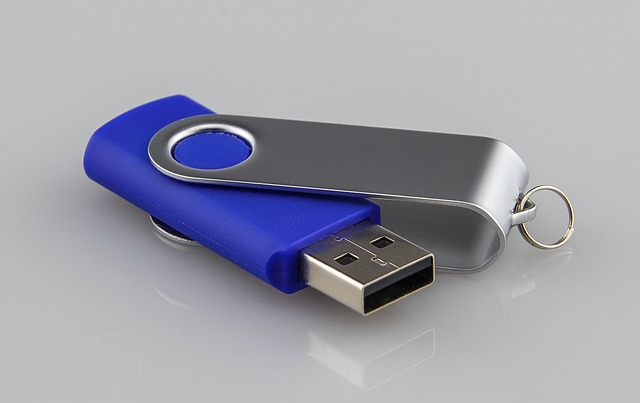Navigating the vehicle title transfer process can seem daunting, but with clear guidance, it becomes a straightforward task. Whether you’re buying a new ride or passing on an old one, understanding DMV title transfer requirements is key to maintaining clear and legal ownership of your vehicle. This article demystifies the steps involved in transferring a car title, outlining the necessary forms, fees, and considerations for both in-state and out-of-state transfers. From the initial paperwork to the final transaction, learn how to smoothly transition vehicle ownership without unnecessary delays or complications. Get ready to confidently handle your DMV title transfer and keep your records up-to-date.
- Understanding the Necessity of DMV Title Transfer for Vehicle Ownership Transition
- Comprehensive Guide to DMV Title Transfer Forms and Their Usage
- Decoding DMV Title Transfer Requirements: What You Need to Know Beforehand
- Breaking Down Title Transfer Fees and Costs Associated with the Process
- Step-by-Step Walkthrough: How to Transfer a Car Title Legally and Efficiently
- Navigating In-State vs. Out-of-State Title Transfers: Key Differences and Considerations
- Avoiding Delays: Tips for a Smooth DMV Title Transfer Process Post-Purchase
Understanding the Necessity of DMV Title Transfer for Vehicle Ownership Transition

When transitioning vehicle ownership through a DMV title transfer, it’s crucial to navigate the process with precision and adherence to the stipulated DMV title transfer requirements. The vehicle title transfer process is a critical step that legally transfers ownership of a car from one party to another. This process is not only a regulatory requirement but also a safeguard against potential legal issues arising from unauthorized use of a vehicle. To initiate the DMV title transfer, one must complete the necessary forms, which vary by state but generally include a formal application for a certificate of title. It’s imperative to obtain these forms from the local Department of Motor Vehicles (DMV) or their official website.
Upon completion, the applicant must submit the filled-out forms along with proof of ownership, such as the current vehicle title if available, and relevant documents verifying the sale or transfer of the vehicle. Title transfer fees and costs are an integral aspect of this process; they ensure the transaction is legal and properly recorded by state authorities. These fees vary depending on the state but are non-negotiable for the completion of the DMV title transfer. It’s advisable to check the specific title transfer fees for your state prior to beginning the process. Once all necessary paperwork and associated fees are submitted, the DMV will process the title transfer after car purchase, issuing a new title in the name of the buyer. To avoid delays or complications, it’s wise to follow a detailed checklist provided by the DMV or a trusted resource, which can guide you through each step of the in-state or out-of-state title transfer process. This due diligence not only expedites the transition but also provides peace of mind that the car title is transferred lawfully and effectively.
Comprehensive Guide to DMV Title Transfer Forms and Their Usage

When engaging in the vehicle title transfer process, understanding the DMV title transfer forms and their specific usage is paramount for a seamless transaction. The primary form required for most title transfers is the application for a certificate of title. This form initiates the process by notifying the DMV of the change in ownership. Accurate completion of this form is crucial, as it includes information about both the seller and buyer, as well as details about the vehicle itself. Additionally, proof of liability insurance may be required to transfer a car title, ensuring that the new owner has coverage from the moment the title is transferred.
Beyond the application, DMV title transfer requirements can vary by state, so it’s important to consult the specific guidelines for your jurisdiction. Typically, these include submitting the current title (if applicable), odometer disclosure for used vehicles, and a bill of sale or purchase agreement. Title transfer fees and costs are also an integral part of the process; these fees must be paid at the time of submission to process the transfer. It’s advisable to check the exact amount online or by contacting your local DMV beforehand, as these can differ based on the state and county. Understanding these requirements and associated fees in advance will facilitate a smoother title transfer after a car purchase, whether it’s an in-state or out-of-state transaction. Utilizing a DMV title transfer checklist can help ensure that all necessary forms and documents are prepared and submitted, leading to a swift and efficient transfer of vehicle ownership.
Decoding DMV Title Transfer Requirements: What You Need to Know Beforehand

When navigating the vehicle title transfer process, understanding the DMV title transfer requirements is paramount to avoid delays and ensure a seamless transition. Typically, you’ll need to complete specific forms designated for title transfers, such as an Application for Title and Registration or equivalent, depending on your state. These forms must be accompanied by the current title to the vehicle, which should be signed over to the new owner. Additionally, proof of vehicle sale price may be required if transferring a used car, along with valid photo ID. It’s important to verify the exact documentation needed as requirements can vary by state.
Title transfer fees and costs are an integral aspect of the process; these fees ensure the legality and proper recording of the title change. The amount can differ based on jurisdiction, with some states charging a flat fee while others calculate costs based on vehicle value or weight. To expedite the transfer after a car purchase, it’s advisable to prepare all necessary documents in advance, including proof of insurance, odometer disclosure if applicable, and any lienholder information. By familiarizing yourself with the DMV title transfer requirements beforehand and having all required paperwork ready, you can navigate the process with confidence, whether you’re conducting an in-state or out-of-state title transfer. Remember to check your specific state’s guidelines as procedures and fees may differ.
Breaking Down Title Transfer Fees and Costs Associated with the Process

When navigating the vehicle title transfer process, understanding the associated fees and costs is crucial for an efficient transaction. Title transfer fees vary by state, with each jurisdiction setting its own prices for processing the transfer of ownership. These fees are non-negotiable and must be paid to finalize the DMV title transfer requirements. Typically, they cover the cost of handling the paperwork, updating records, and issuing a new title in your name. Additionally, there may be excise taxes, sales taxes, or use taxes due at the time of transfer, depending on the state’s regulations and whether the vehicle is new or used. To transfer a car title after a purchase, one must also account for any lienholder fees if the vehicle has an existing loan, as well as any registration fees that may be due upon completion of the DMV title transfer process. It’s important to verify these costs ahead of time by contacting your local DMV or visiting their official website, as fees can fluctuate and may differ for each specific situation. Understanding what to expect in terms of title transfer fees and costs not only ensures compliance with state laws but also aids in budgeting for the entire process, making the transition from seller to buyer seamless and legally sound.
Step-by-Step Walkthrough: How to Transfer a Car Title Legally and Efficiently

When transferring a car title legally and efficiently, it’s crucial to adhere to the specific vehicle title transfer process mandated by your state’s Department of Motor Vehicles (DMV). The process begins with completing the appropriate DMV title transfer forms, which vary by state. These forms serve as documentation of the sale or transfer of ownership and must be filled out accurately to avoid delays. After submitting the completed forms, you’ll need to present the current title and any required ID or proof of insurance to the buyer or seller. Additionally, you must pay the title transfer fees and costs associated with the transaction. These fees can differ based on your state’s regulations and whether the transfer is for a standard vehicle or specialized vehicles like motorcycles or RVs.
Once all forms are submitted along with the necessary documentation and title transfer fees, the DMV will process your application. This processing includes verifying the information provided and ensuring that all legal requirements are met. The entire title transfer after car purchase is typically completed within a few weeks, though it can be expedited in some cases for an additional fee. To ensure a smooth transition, whether the transfer is in-state or out-of-state, it’s advisable to use a DMV title transfer checklist. This checklist will help you keep track of all the steps, forms, and documents needed, as well as any associated title transfer fees and costs. By following this structured approach, you can minimize the risk of errors or oversights, ensuring that the title is transferred legally and efficiently to the new owner.
Navigating In-State vs. Out-of-State Title Transfers: Key Differences and Considerations

When navigating in-state versus out-of-state vehicle title transfers, understanding the distinct requirements and processes is crucial for a seamless transition. For an in-state transfer, individuals must familiarize themselves with their state’s specific DMV title transfer forms and procedures. Typically, this involves completing the requisite application form, submitting proof of ownership such as the current title or bill of sale, providing identification, and paying the applicable title transfer fees and costs. The process is streamlined within the state due to existing inter-agency communication channels and shared databases, which can expedite the update of vehicle registration records and issuance of new titles.
In contrast, out-of-state title transfers involve additional steps due to the lack of direct state-to-state communication. The DMV title transfer requirements for an out-of-state transfer often necessitate the submission of a completed application, proof of sale or transfer of ownership document from the previous state, a current vehicle inspection (if required by the new state), and the original out-of-state title. Additionally, individuals must comply with the transfer fees and costs dictated by their new state’s DMV. It’s important to research the specific regulations of the new state to ensure all paperwork is in order, as failure to do so can result in delays or legal complications post-car purchase. Understanding these key differences and considerations is vital for a smooth title transfer process, whether you’re staying within your state or transitioning to a new one. Knowledge of the vehicle title transfer process, adherence to DMV title transfer requirements, and awareness of the associated title transfer fees and costs are all critical components in successfully transferring a car title after any purchase.
Avoiding Delays: Tips for a Smooth DMV Title Transfer Process Post-Purchase

To avoid delays and ensure a seamless DMV title transfer process following your vehicle purchase, it’s crucial to be well-prepared and knowledgeable about the specific requirements and steps involved. Begin by gathering all necessary documentation beforehand. This typically includes the signed over title from the seller, a bill of sale, proof of insurance, a valid photo ID, and any applicable smog or safety inspections. Ensure that the vehicle’s odometer reading is accurately reported on the title transfer form to avoid complications. Next, familiarize yourself with the DMV title transfer requirements for your state, as these can vary significantly. Some states may require a VIN inspection, while others might not. Knowing whether you need to complete the transaction in person or if an online process is available will save time. Be mindful of the title transfer fees and costs associated with the process; these can differ based on your location and the type of vehicle. To transfer a car title effectively, always check the most current fee structure on the DMV’s official website to avoid any unexpected expenses. Lastly, remember that timely submission of all forms and payments is key. Processing times can be lengthy if information is incomplete or incorrect, so double-check your paperwork for accuracy before submission. By adhering to these guidelines and utilizing the DMV’s official resources, you can navigate the vehicle title transfer process with greater ease and confidence.
Navigating the vehicle title transfer process can seem daunting, yet with a clear understanding of DMV title transfer requirements and a methodical approach, it is a straightforward task. This article has demystified the steps involved in transferring a car title, from filling out the correct forms to understanding the associated title transfer fees and costs. Whether you’re handling an in-state or out-of-state title transfer, the comprehensive guide provided ensures that you are well-equipped to proceed without delay. Remember, the key to a seamless transition is preparation and attention to detail, as outlined in our step-by-step walkthrough. By adhering to these guidelines, you can confidently transfer your car title legally and efficiently after any purchase.



